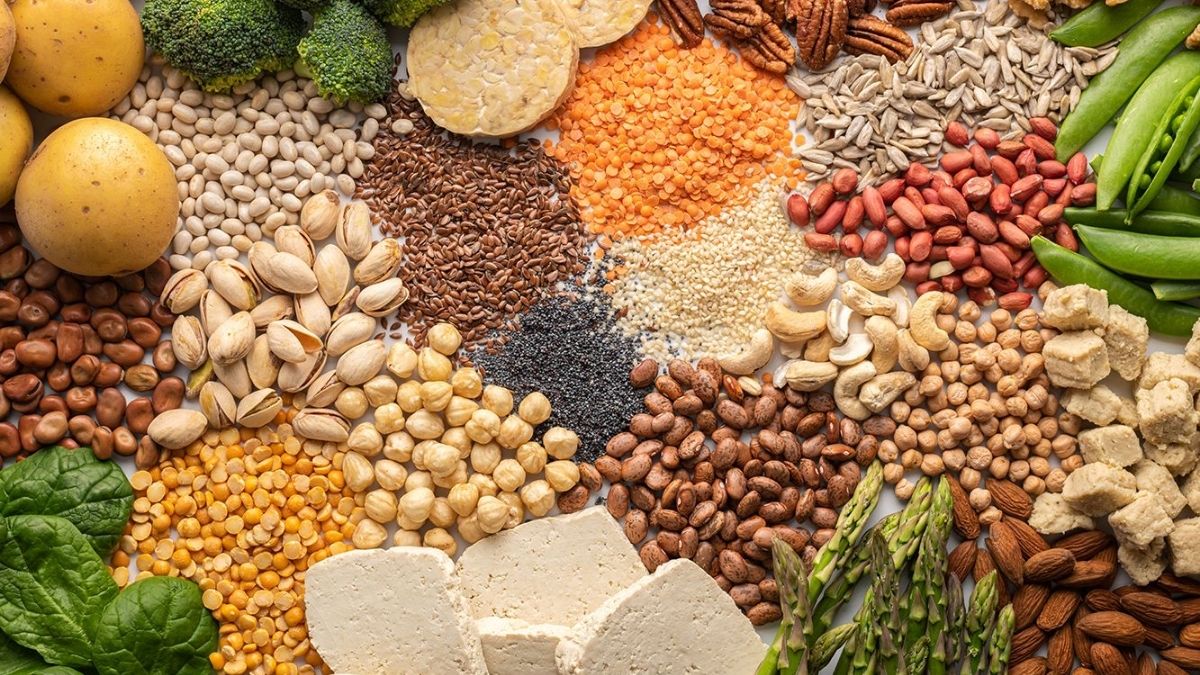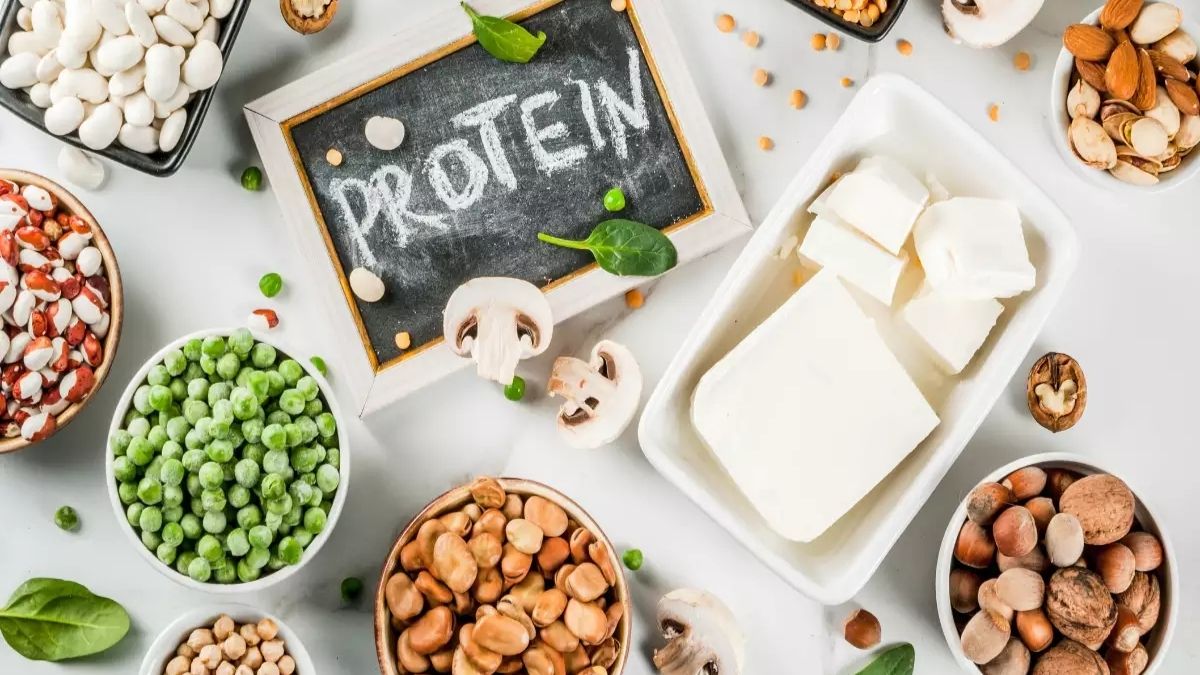Plant proteins are found in many foods, more than you might think. This includes, among many other things, beans, tofu, lentils, chickpeas, quinoa, nuts, potatoes, chia seeds, and some vegetables. You can get all the nutrients your body needs from these plant-based proteins, but you have to know what to look for and choose your foods carefully. Whether you are a vegetarian, a vegan, or want to cut some meat out of your weekly meals, plant proteins are the best way to ensure you don’t lose out on needed protein as you cut back on or get rid of animal products.
About 20% of a person’s body is made up of protein. So, we need to eat a lot of it because it’s an important nutrient. Even though meat and dairy are easy ways to get the protein they need, many people choose not to eat them for moral or health reasons.
We’ve put together a list of our favourite plant-based protein sources to help you figure out what you should eat most often. The most protein is at the top, and the least is at the bottom. Even the least protein has at least 10 grammes per serving, so they all pack a full protein punch. Find out what these plant-based foods are and how to use them in your cooking by reading on.
What is Plant Protein?
Protein from plants is different from protein from fish or animals. It can be made up of many different foods, but most plant proteins come from nuts (raw and roasted), legumes, seeds, and beans. Potatoes and other vegetables, like broccoli, kale, asparagus, and mushrooms, also have protein. Bread, made from barley, wheat, lentils, millet, and spelt, is another good food full of plant protein.
Processed foods like tempeh, tofu, and texturized vegetable protein (TVP) also have protein and are often used in place of meat. Soybeans are used to make these foods. Depending on how they are cooked, each cup of soybeans has between 68 and 22 grammes of protein. Seitan is another processed food full of protein and is made from wheat gluten that has been spiced. It feels a little rubbery when it’s cold and cooks well in a pan, grill, or oven.
9 Plant Foods with at least 7 Grams of Protein
Tempeh
The best plant-based source of protein is tempeh, which has 34 grammes per cup or 18 grammes per 3 ounces. It also has 10 grammes of fibre, making it a great source. It also has a lot of amino acids, which is something that many plant proteins don’t have. Soybeans are fermented to make teff, and this process makes it easier for your body to use the nutrients in it. Try it in a simple sweet-and-sour dish, as a meat substitute in chilli, in a “chicken” salad, or a “cheesesteak” sandwich from Philly.
Seitan
Not far behind tempeh in protein content is seitan. It has 17 grammes of protein per 2.5-ounce serving and nearly 32 grammes per cup. Seitan is not a whole food like tempeh, made from fermented soybeans, but that doesn’t mean it isn’t healthy. It’s made from wheat gluten, so people with celiac disease or gluten intolerance shouldn’t eat it. You can use wheat gluten to make your seitan or buy it already made. It has a meaty feel and takes on flavours well. Make spicy Buffalo wings, tacos, or “chicken” tenders.
Lentil
This high-fibre pulse gives you 18 grammes of protein per cup, which is a great addition to your day if you eat at least 1/2 cup (9 grammes of protein). Lentils almost have as much fibre as they do protein, making them very filling. They come in many different kinds, and their textures are all different. When cooked, pink lentils become soft and creamy, while French black lentils keep their shape and crunch. They taste great with Moroccan spices added, in a high-protein soup with barley, or as the base of an easy vegan and gluten-free loaf.
Edamame
Before making them into tofu or tempeh, soybeans still in their pods are called edamame. Each half-cup of these small green beans has more than 9 grammes of protein. Plus, they have 4 grammes of fibre, making them a filling appetizer that can be eaten with a light main dish. You can boil them and then add salt to taste. If you like things with more heat, you can add chilli flavours to this bean, like in this angry edamame and this spicy version.
Quinoa
Quinoa has a lot of amino acids for a portion of plant-based food, but it is also a great source of protein, with 8 grammes per 1 cup serving. Quinoa has become very popular because it is one of the few plant foods with all nine essential amino acids, making it a “complete protein.” Because it has amino acids, it has more nutrients than other grains. However, it is a seed, even though it is used as a grain. Quinoa tastes a bit like couscous, and you can eat it in dishes like quinoa with marinara sauce, vegetarian stuffing, or a tabouleh salad.
Hemp Seeds
Hemp seeds are soft and easy to chew. Each 1.5 tablespoon serving7 has 7.5 grammes of protein. That’s about twice as much as chia seeds, and flax seeds have, so they’re a better choice if you need plant-based protein. They are known for having healthy fats because they have both omega-3 and omega-6 acids. These tiny seeds can be sprinkled on everything from salads to smoothies. They are also called hemp hearts. Use them to make a creamy, healthy plant-based milk, or add them to smoothies like this high-protein peanut butter one.
Beans
There are a lot of different beans that are full of protein. Each 1/2 cup serving of cranberry beans, chickpeas, black beans, pintos, and kidney beans has between 7 and 8 grammes of protein. They have almost the same fibre as protein and almost no fat. Folate, phosphorus, and manganese are all in high amounts in them. Beans can be a side dish, the main course, or a salad part. They can be the base of a vegetarian chilli, used to make veggie burgers, added to a taco soup made in a slow cooker, paired with rice, or added to a pasta salad.
Peanuts
This “nut” is a legume with a lot of protein. Peanuts have more than 7 grammes of protein and about 2.5 grammes of fibre per ounce9. They are full of fat and taste good. Peanuts can be made into peanut butter, but they can also be used in other ways in the kitchen. You could put them in a spinach stir fry or coleslaw with noodles. If you like peanuts that have already been ground into nut butter, you can make an easy peanut sauce or a bowl of sticky rice.
Tofu
This simple block of soy is often the star protein in main dishes because it has 7 grammes of protein per 1/2 cup10. It’s low in carbs and fat, and even though it’s not as healthy as fermented tempeh, it’s still thought to be pretty healthy. Stir-fries, like this one with peanut sauce, work well with tofu. You can also use it instead of ricotta in lasagna to improve a fruit smoothie or even a base for a vegan whipped cream.
Where to Buy Plant Protein?
Plant proteins are now sold in many grocery stores, and they come in many different forms. Some grocery stores sell beans, peas, and quinoa in bulk, but all of them sell them in cans and bags. You can also find nuts in bulk bins or already measured out. In the cooler in the vegetarian section, you can find tofu, tempeh, and seitan that have already been packaged. Some specialty markets, usually Asian ones, sell fresh tofu. If you can find it, it’s a real treat. The protein-rich vegetables listed are available at almost every grocery store in the country, though some are only available during certain times. Of course, you can always do it online as well.
What to do with Plant Protein?
Processed foods like tempeh, tofu, and texturized vegetable protein (TVP) also have protein and are often used in place of meat. Soybeans are used to make these foods. Depending on how they are cooked, each cup of soybeans has between 68 and 22 grammes of protein. Seitan is another processed food full of protein and is made from wheat gluten that has been spiced. It feels a little rubbery when it’s cold and cooks well in a pan, grill, or oven.
Individual vegetables, seeds, nuts, legumes, pulses, nuts, and beans have more natural flavour. That doesn’t mean they shouldn’t be cooked well or paired with other foods and spices. Soybeans, cranberry beans, lentils, split peas, kidney beans, white beans, lima beans, and pinto beans are legumes and beans with the most protein. Most of these foods are good in soups and stews, but they can also be used as main dishes or side dishes. Seeds and nuts are also a good source of protein, and they can be sprinkled on or mixed with almost any food. Sunflower and squash seeds can be roasted and eaten whole as a snack, and the best way to eat nuts is to roast them.
There is a lot of protein in vegetables as well. Think about corn, peas, mushrooms, spinach, broccoli, Brussels sprouts, and asparagus. Even though other vegetables also have protein, these are the ones with the most. Any vegetable should be cooked to the taste of the person who eats it, and most can be boiled, grilled, roasted, pan-fried, sautéed, or eaten raw. Mix beans or legumes with vegetables high in protein to make a meal that will fill you up.
How to Store Plant Protein?
How to plant protein is stored depends on what foods are on hand. Dried beans and legumes do best in cool, dry places in the pantry. Canned beans can go almost anywhere if it’s not too hot or in direct sunlight. Most vegetables can go in the fridge without being washed or cut up. Tofu and tempeh, made from soybeans and need to be kept cold, should also be kept in the fridge. Nuts can be stored in bags or jars as long as they are dry and in a cool place.
Myths
Meat isn’t the only way to get protein, and people who don’t eat meat can easily get enough protein from plants. It takes some planning because not all plant proteins have the amino acids and vitamins that the body needs. But when it comes to protein, beans, legumes, nuts, and vegetables are all easy ways to get enough.
How to Adopt a Plant-Based Diet?
The plant-based diet is pretty simple and easy to understand because it is based on foods that come from plants. Fruits, vegetables, whole grains, beans, seeds, and nuts are encouraged on plant-based diets, so these foods make up most of what you eat. To give you a hand, our frozen vegetables are a simple and tasty place to start if you want to add more plants to your life slowly. At first glance, this may look like a typical vegan or vegetarian diet. It’s not just a plant-based diet; it’s much more flexible and doesn’t completely cut out dairy, meat, seafood, and eggs.
Conclusion
Foods high in protein but don’t come from animals are called “plant-based proteins.” All of the foods on this list are high-protein plant foods, so they can all be considered plant-based proteins. Animal proteins come from animals or animal products, while plant proteins come from plants. Dairy is made from animal milk, which comes from mammals, and meat is the meat of an animal. On the other hand, plant proteins can only be made from things that grow from the ground.


